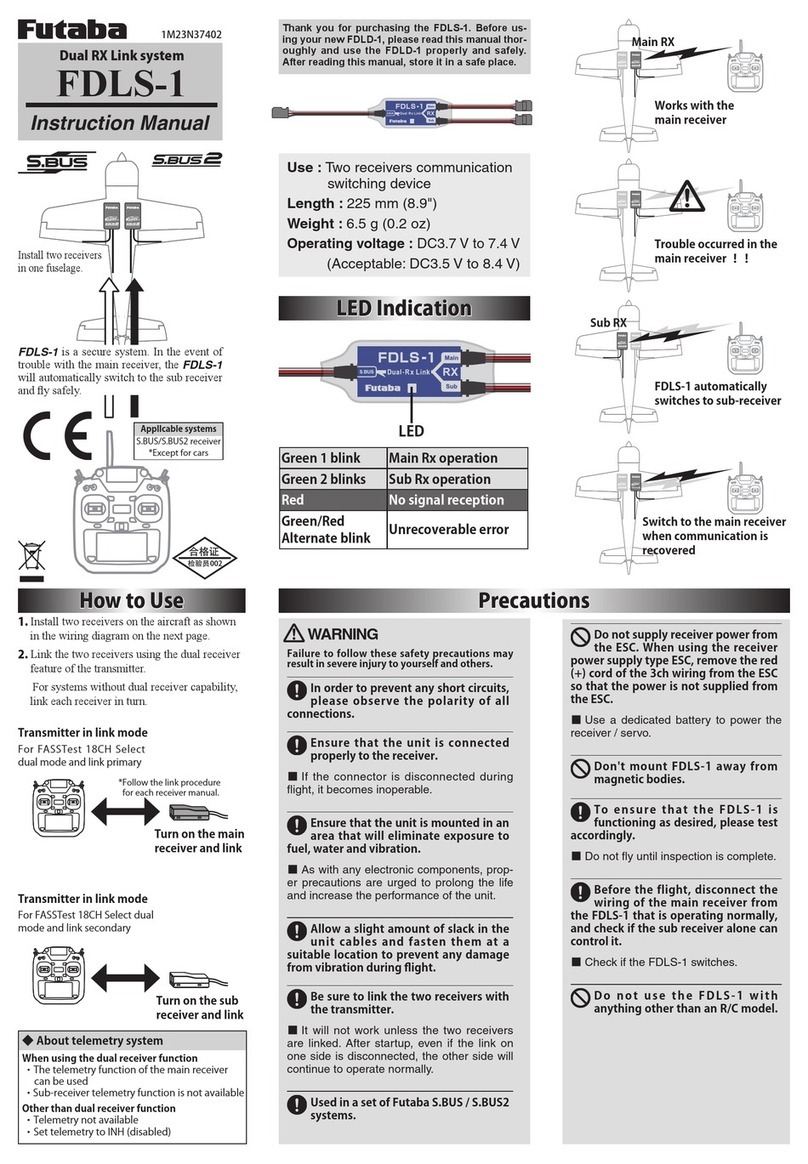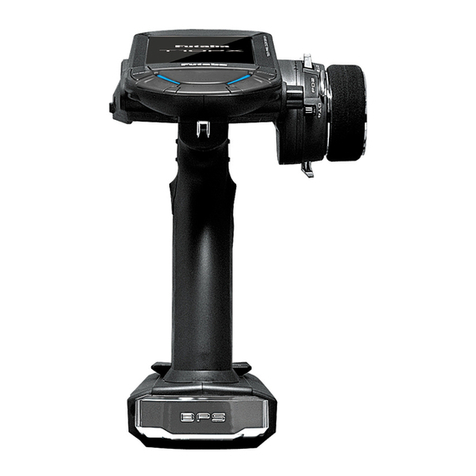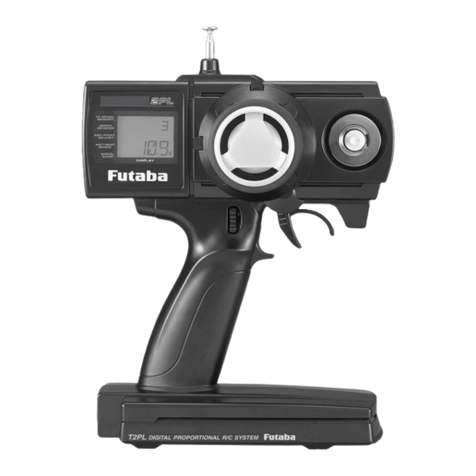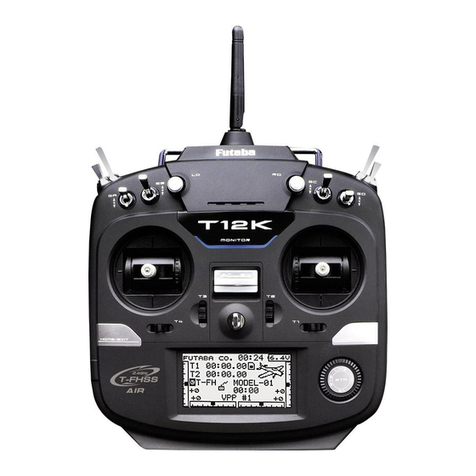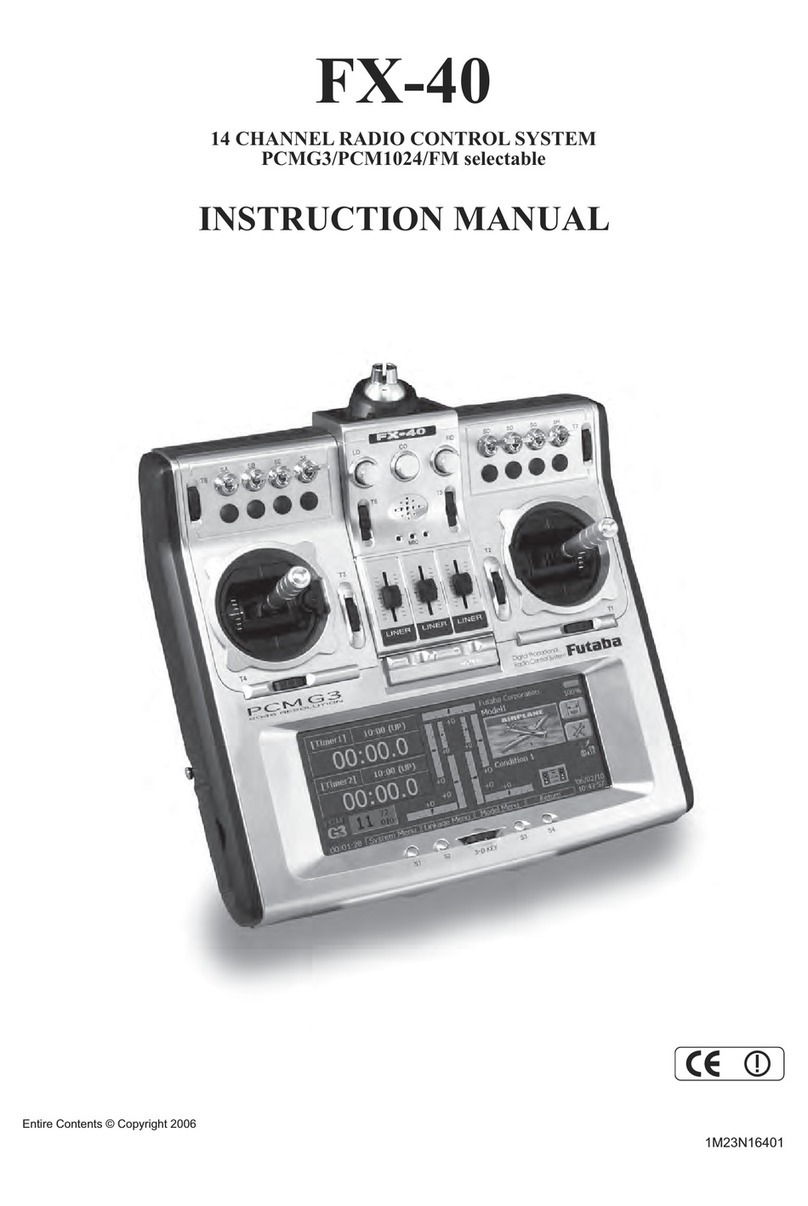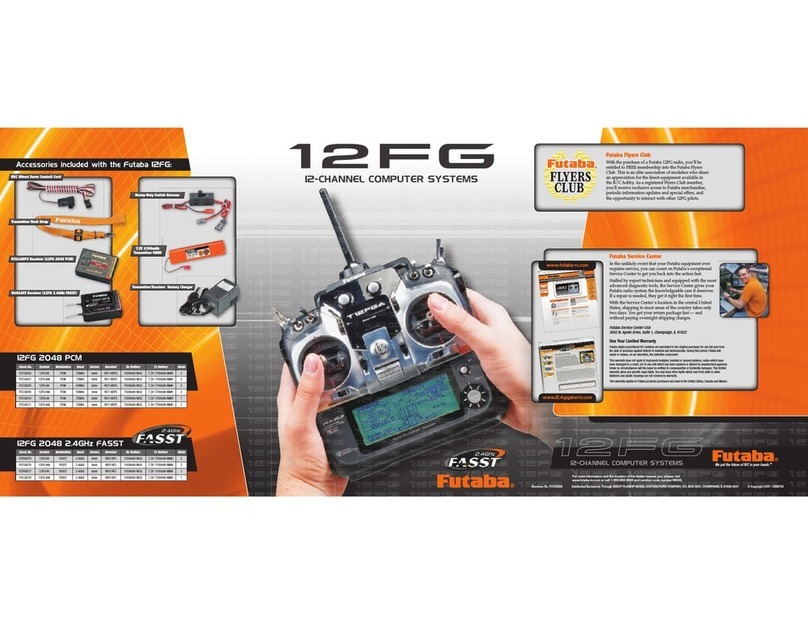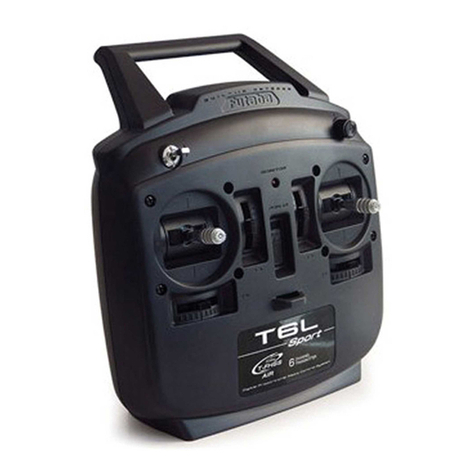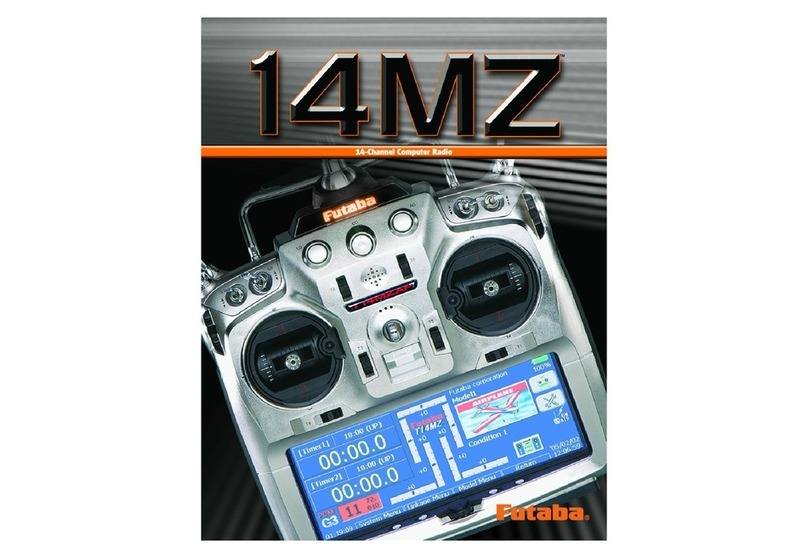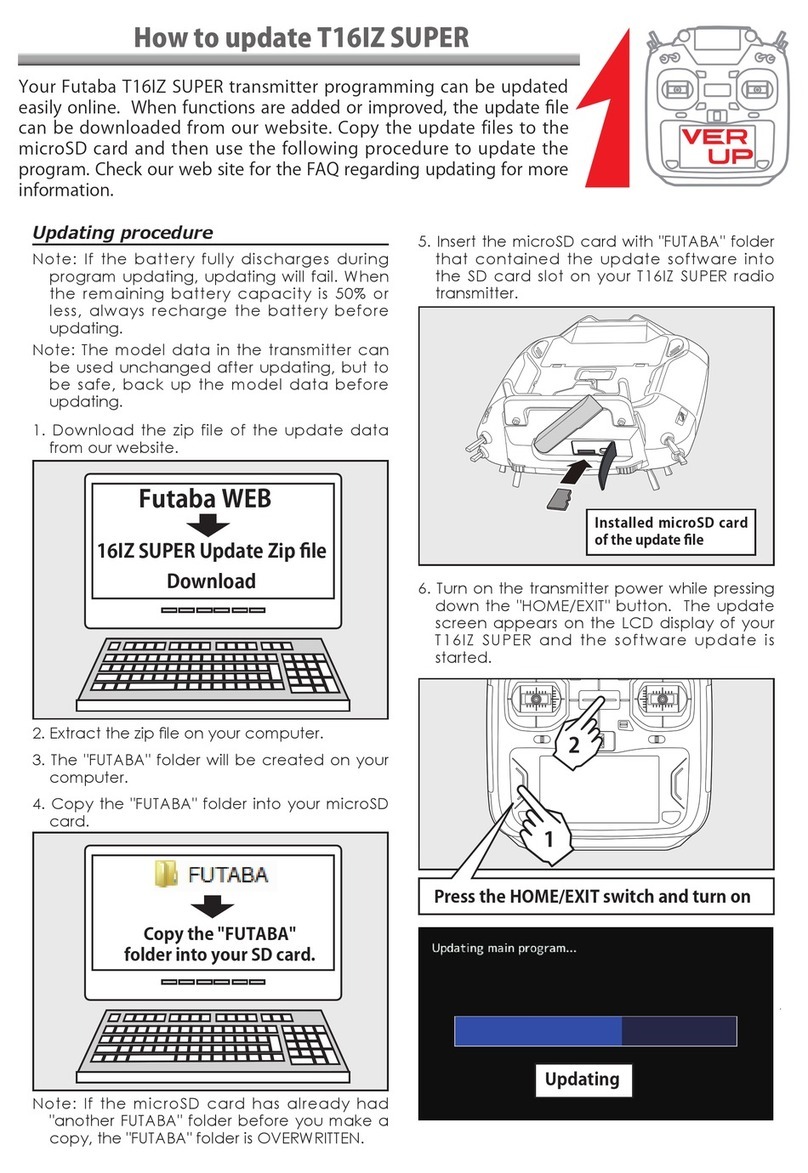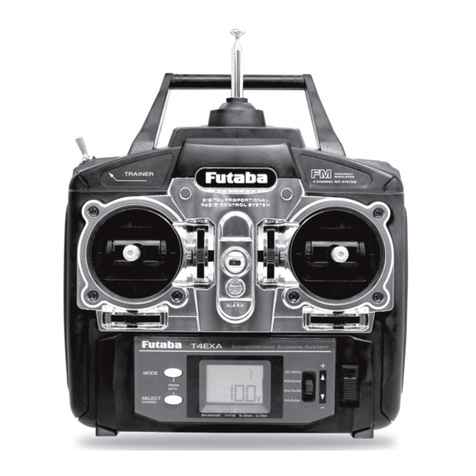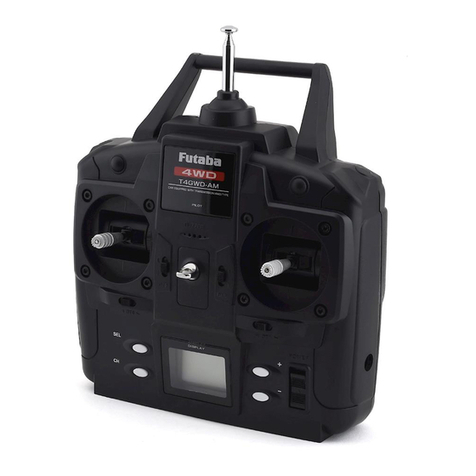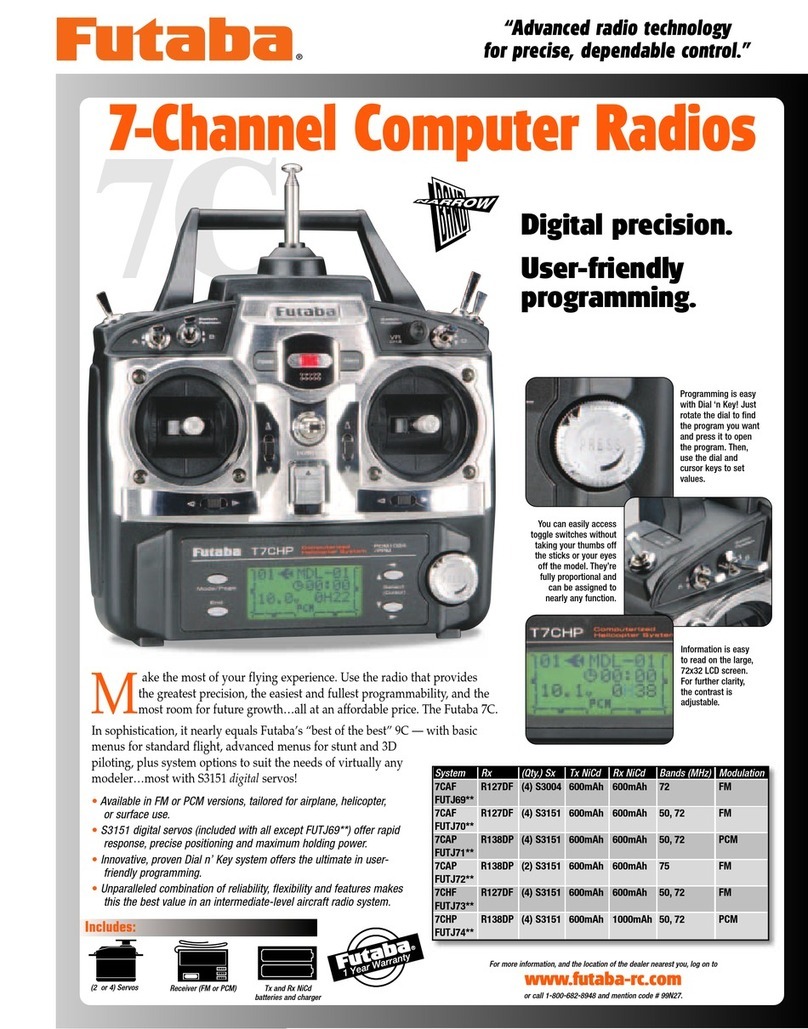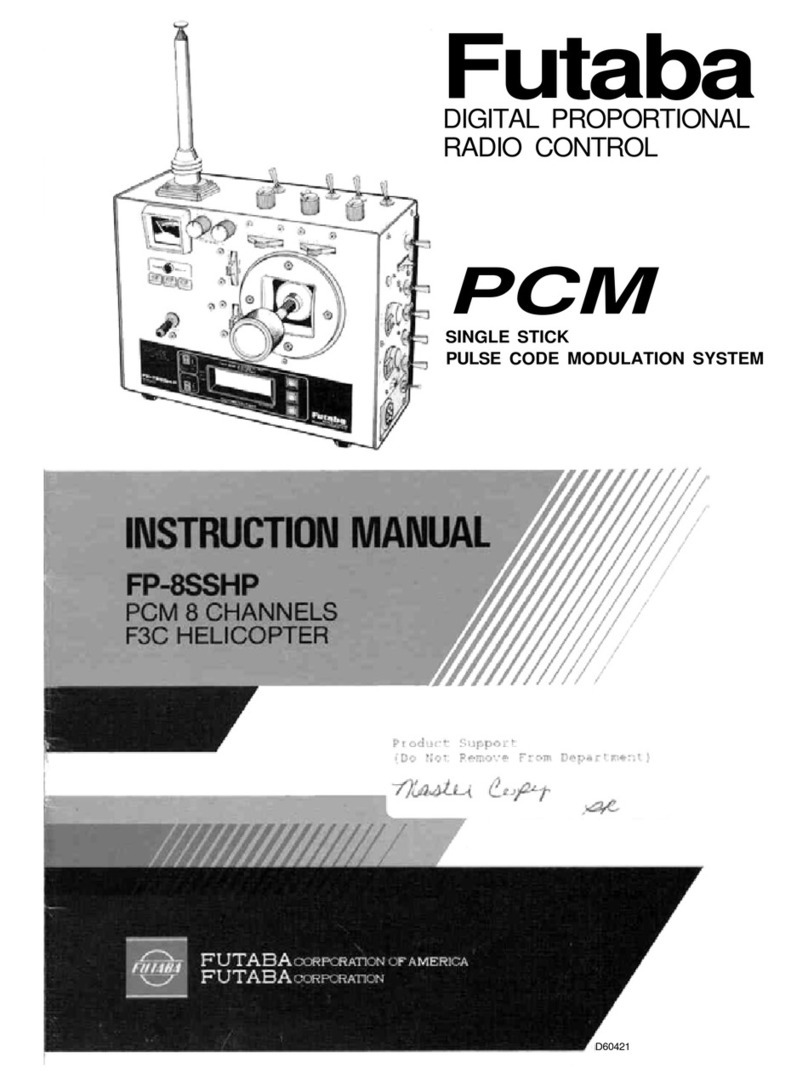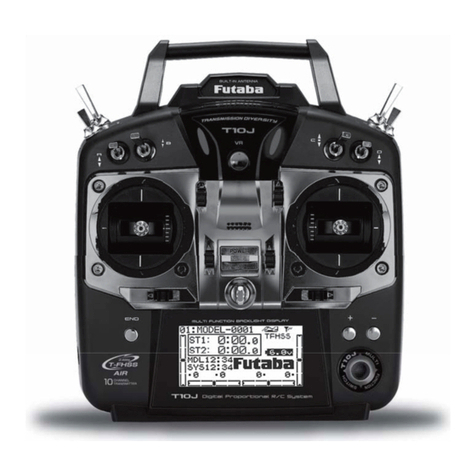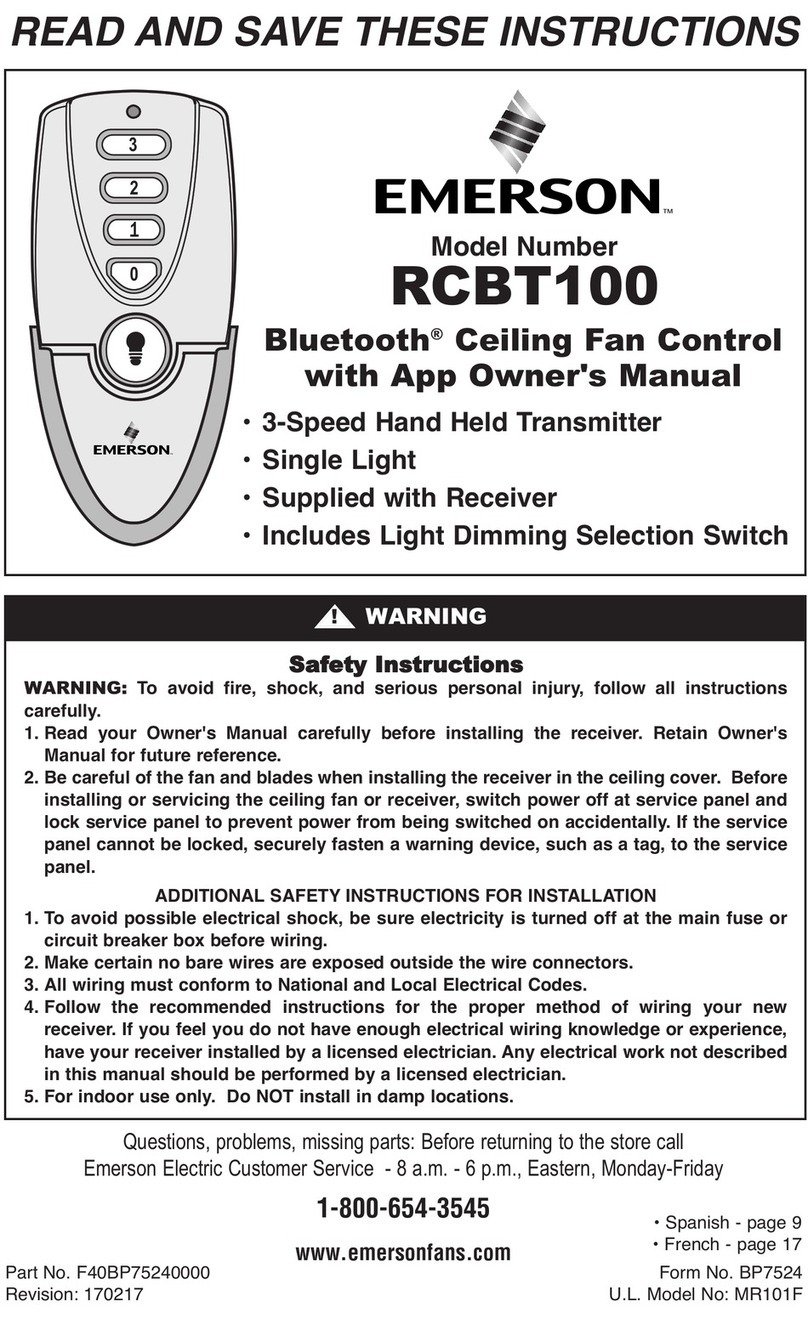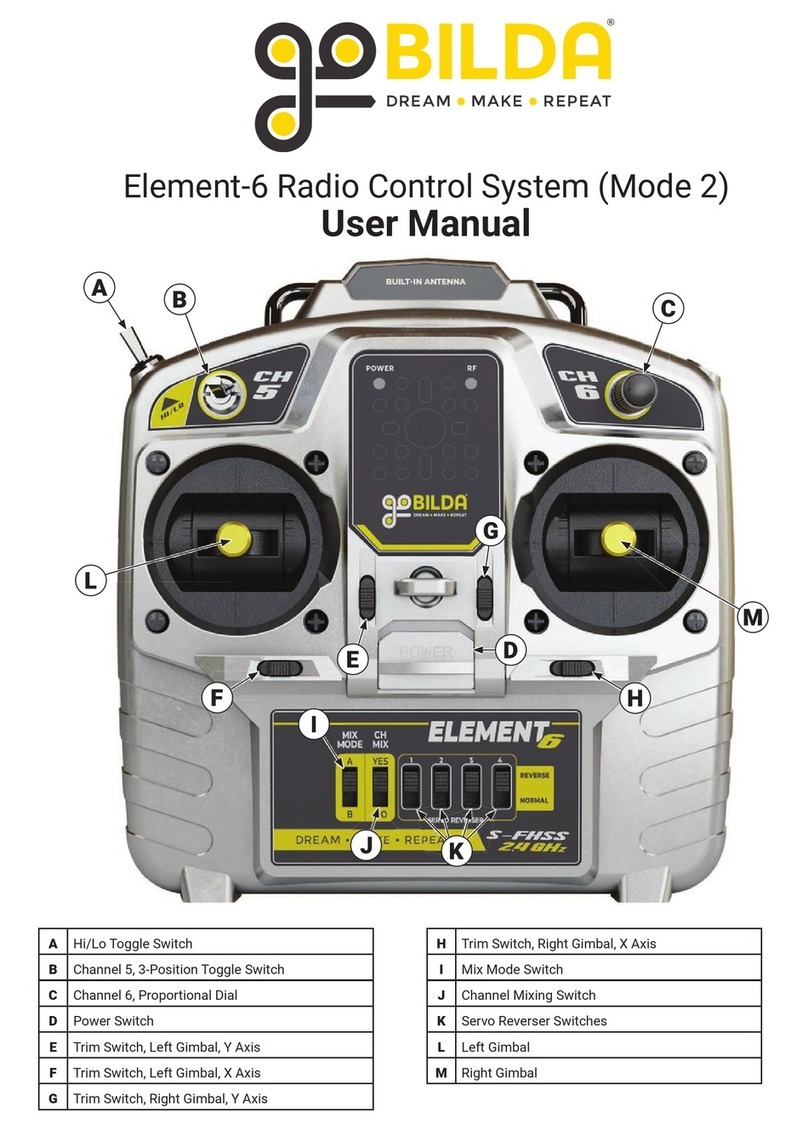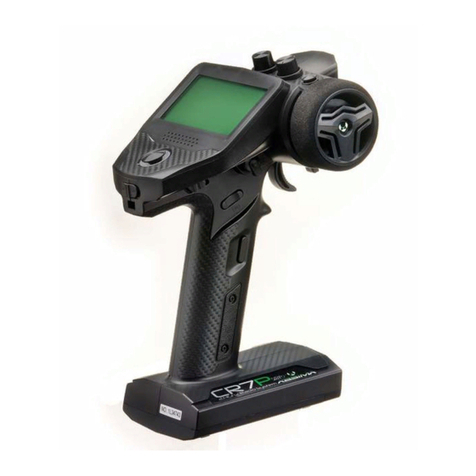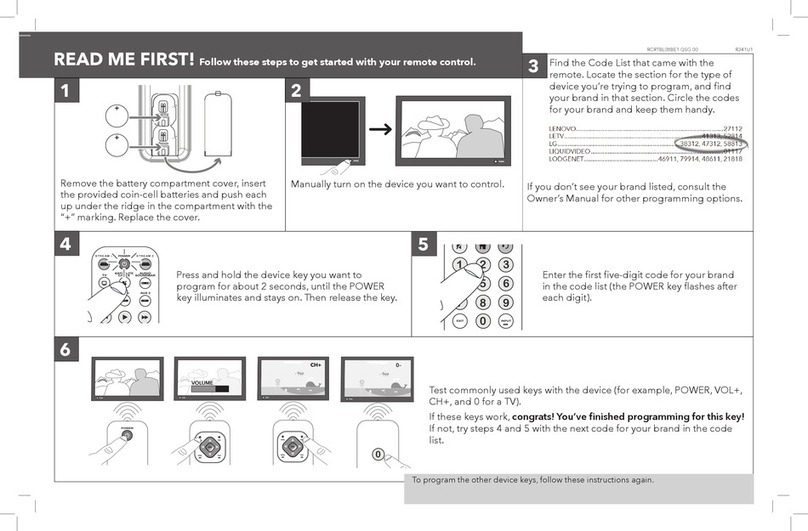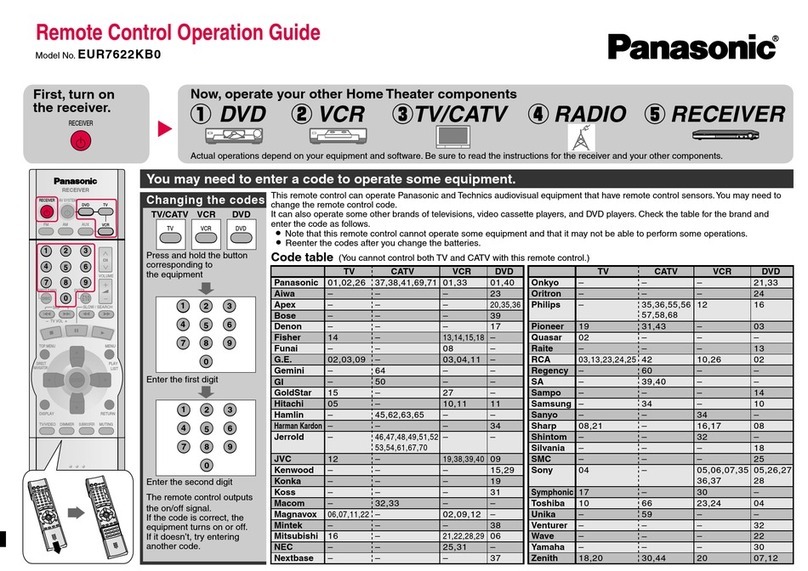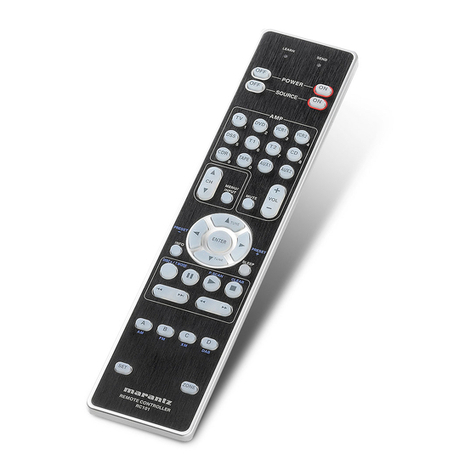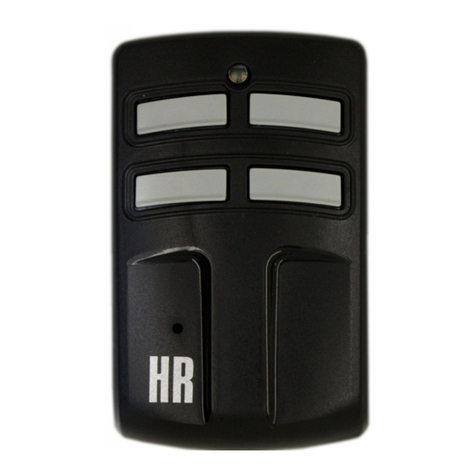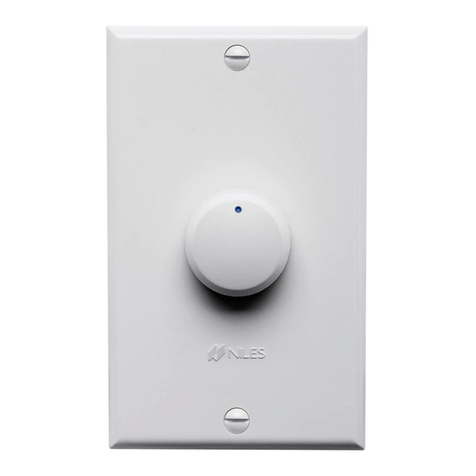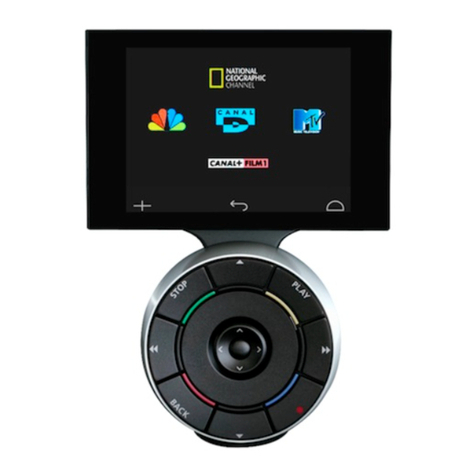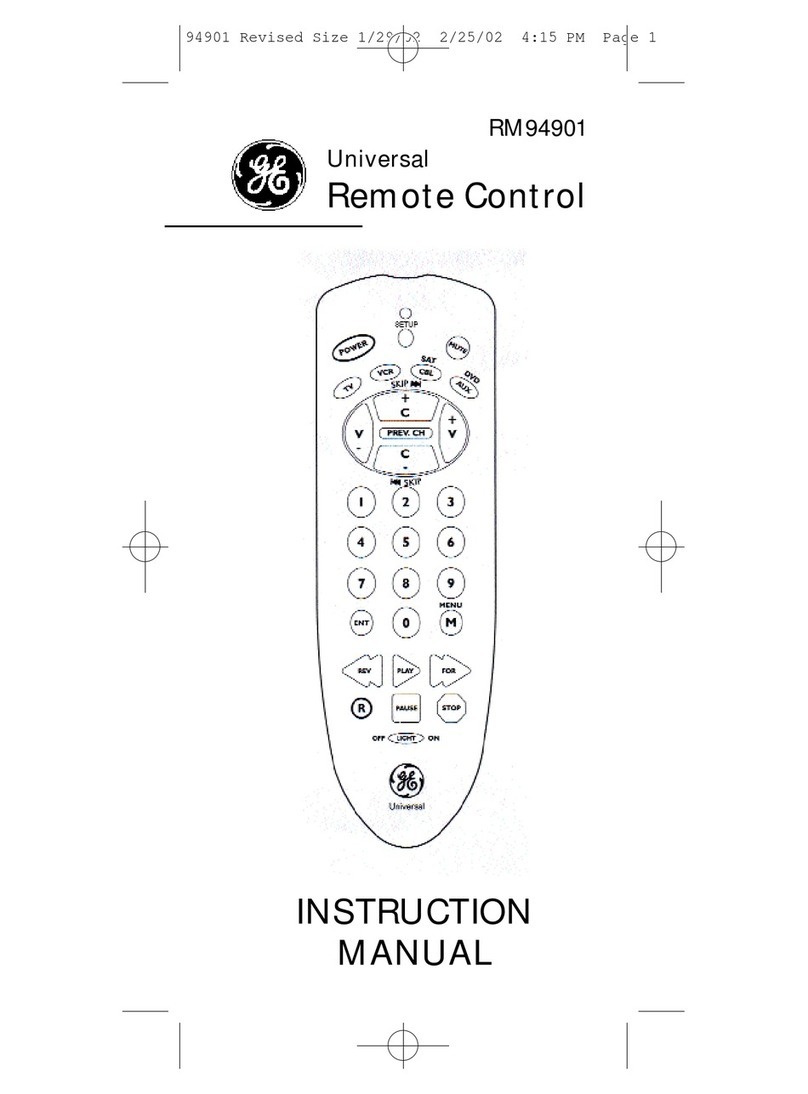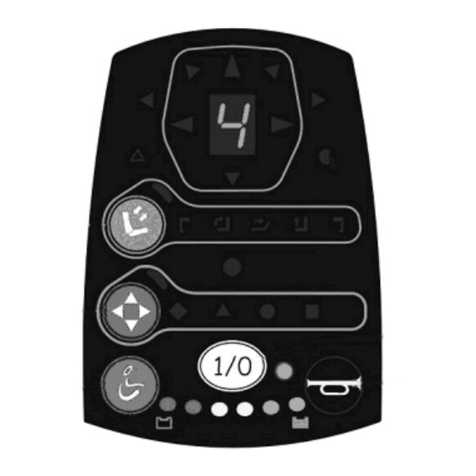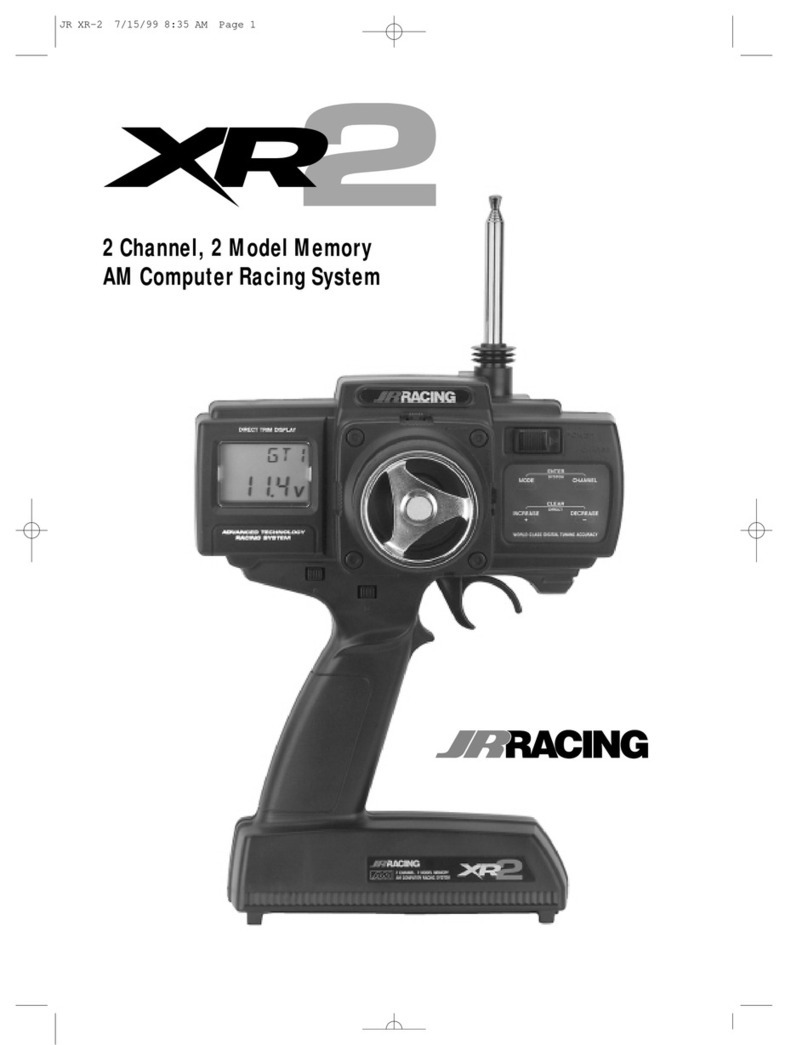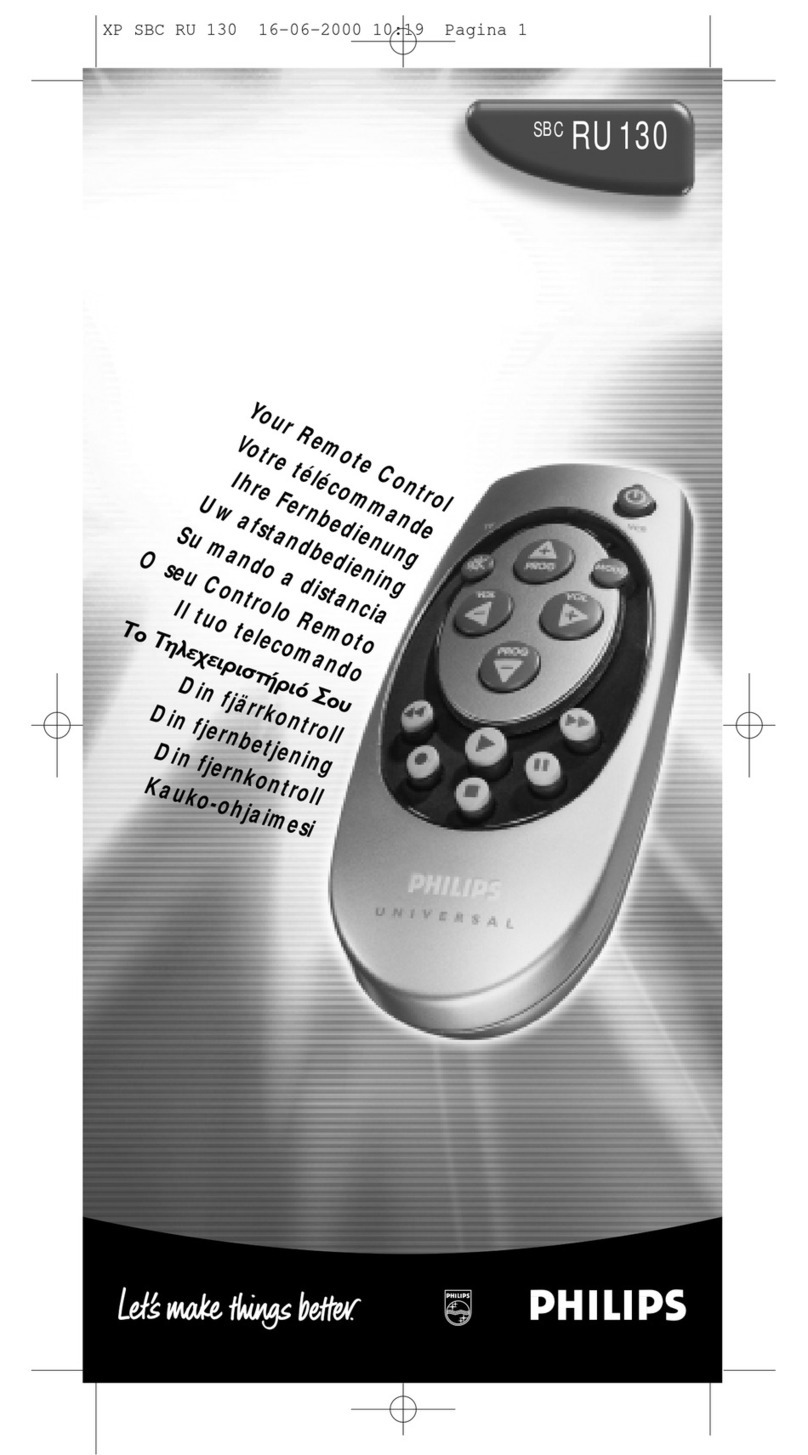
3
S
AFETY
P
RECAUTIONS
Running (Sailing) Safety Precautions
Warning
Do not operate when visibility is limited.
Should you loss sight of the model a collision or other dangerous situation may
occur.
Do not operate near people or roads.
Do not operate near high tension power lines or communication broadcasting
antennas.
Prior to the operation of any model be sure the area you plan to use is safe. Be
aware of all object that may be in the path of your model. Do not operate the model
where people or any type of moveable object could stray in the path of your model.
Control loss due to interference, component failure, loss of sight or low battery
voltage could result in serious injury to yourself and others as well as damage to
your model.
Do not Operate your R/C system within 1 mile of another site where radio
control activity may occur.
Interference from other R/C systems will cause loss of control.
Do not operate two or more models on the same frequency at the same time.
Operation of two or more models on the same frequency at the same time will cause
interference and loss of control of both models.
AM, FM and PCM are different methods of modulation. Nonetheless the same
frequency can not be used at the same point in time, regardless of the signal format.
Never operate in the rain or run through puddles.
The transmitter, receiver, batteries and most servos, and speed controls are not
waterproof. Contact with any type of moisture or immersion in water or snow will
cause damage along with possible loss of control. Should any type of moisture enter
any component of the system immediately stop using the R/C system and return to
our service center for inspection.
(Conduct Tests)
Prior to operation always preform a range test.
Even one abnormality in the R/C system may cause loss of control.
[Range Test Procedure]
Have a friend hold the model, or place on a stand where the wheels or prop can not
come in contact with any object. Collapse the transmitter antenna and operate from
a distance of about 10 yards. Be sure to check the movement of each servo to make
sure they follow the movement of the steering and throttle stick. If the servos do not
follow the commands from the transmitter or any type of interference is detected, Do
Not operate the model.
Fully extend the transmitter antenna.
If the transmitter antenna is not fully extended range will be reduced and control may
be lost.
Do not operate when you are tired, not feeling well or under the influence of
alcohol or drugs.
Your judgement is impaired and could result in a dangerous situation that may
cause serious injury to yourself and others.


